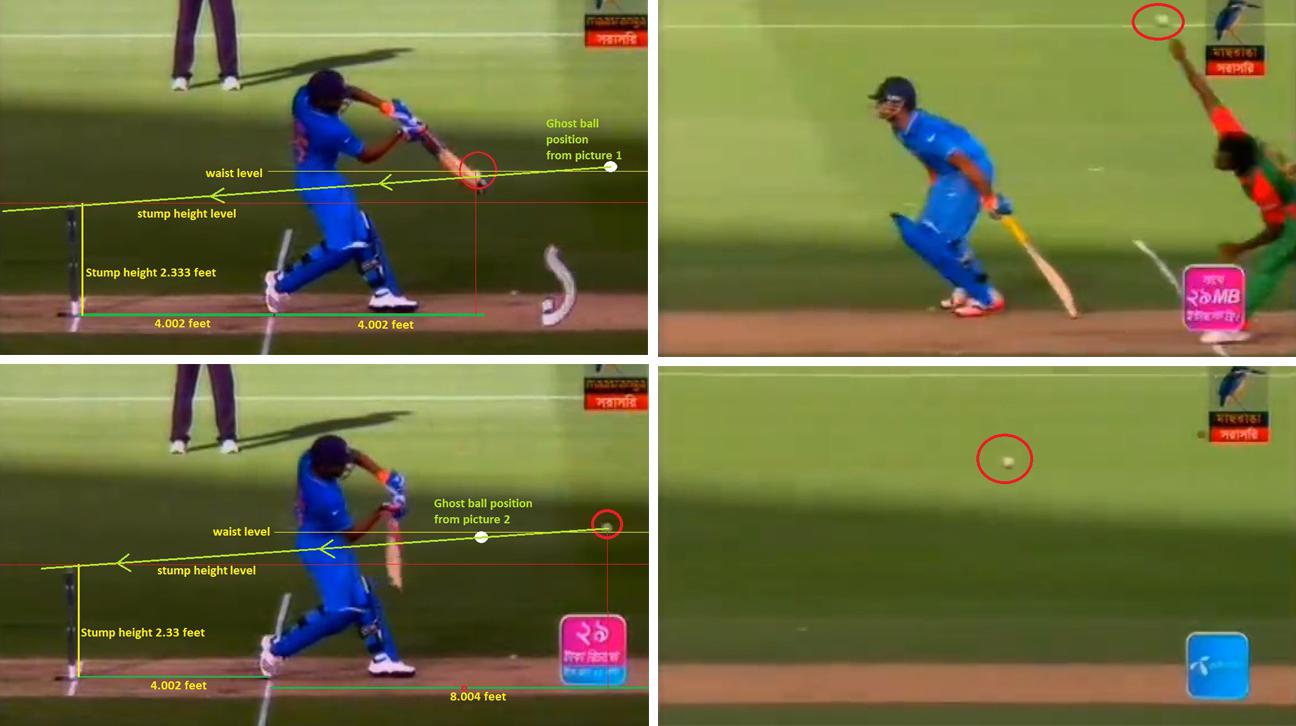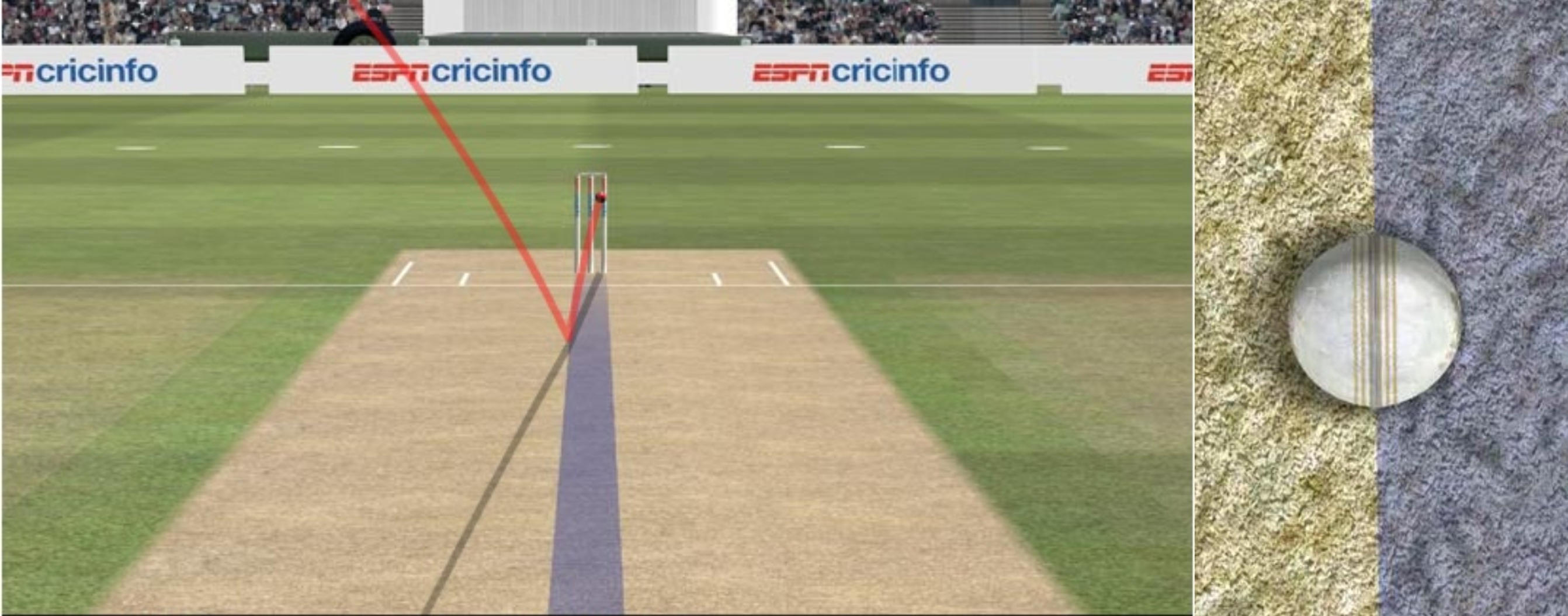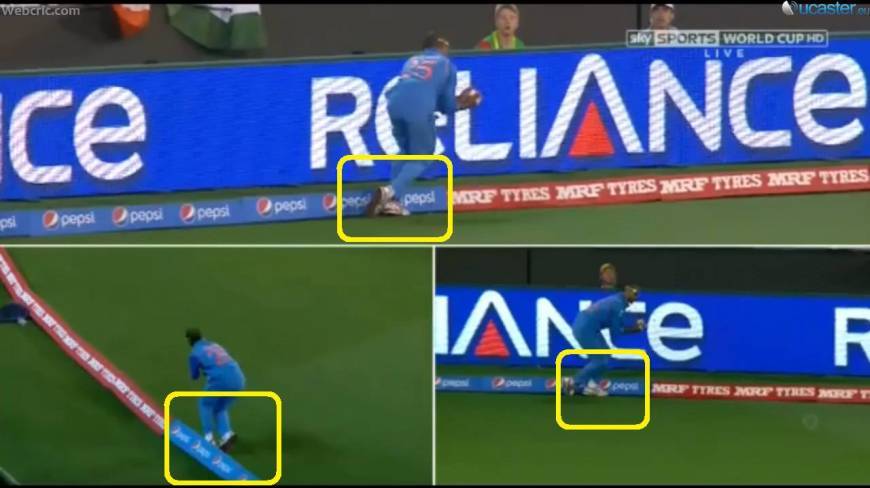Can you remember the final match of the Cricket World Cup 2007 played between Australia and Sri Lanka? It was that rain interrupted match held at Kensington Oval stadium of Barbados, where the match officials unusually gave a decision for the teams to play with an inadequate light facility. Due to taking this sort of decision by mistake, International Cricket Council (ICC) then penalized the five match officials (including umpires Aleem Dar and Billy Bowden) by banning them from becoming umpires in the next T20 World Cup of 2007 held in South Africa.
Fast forward eight years, when the game witnessed a major paradigm shift with the corporate giants finding interest and investing in big cricket tournaments; we saw umpiring ‘mistakes’ on several occasions happening unchallenged, especially in the present World Cup of 2015. The impact of few decisions taken in the match was like death blows, which literally shattered the dream of a country known as the Tigers in the cricket universe.
First time in history, the Bangladeshi tigers qualified for the Quarter Final rounds of the world cup, and there they also experienced the bitter taste of injustice coupled with misfortune against India, and eventually lost the match.
At this stage, question arises – what are the rules to tackle such a situation for maintaining fairness in the cricket matches? Match officials can make mistakes, and the simplest way to intervene is to find whether those ‘mistakes’ were intentional or not. The boundaries of sports law are always hazy, thus often confusing. Finding suitable answers, hence, are often difficult for the lawyers and experts.
Nevertheless, keeping up with the hundred years old legacy of pride; the adherence to the laws, fairness of the rules and the spirit and integrity of the game should be given the supreme priority. It’s being called the ‘Royal Game’ after all.
The ‘not’ No-ball!

The potentially turning point of the match on 19th March at the Melbourne Cricket Ground was the 4th ball of the 40th over of the first innings, when the leg umpire Aleem Dar signaled ‘no-ball’ to Bangladeshi seamer Rubel Hossain for a seemingly waist-high full toss. Indian batsman Rohit Sharma was caught at deep point, but that ‘no-ball’ call fortunately saved him to stay on the pitch and score more runs. While he was batting on 91, he became the beneficiary of this dubious decision, and finally went on to score 137 runs for his team by adding more 46 runs.
According to Law 42(6)(b)(i) of the Laws of Cricket, any delivery which passes or would have passed on the full above waist height of the striker is to be deemed dangerous and unfair. Umpire will call it a ‘no-ball’ in pursuance of Law 24(9). Quite obviously, as it was seen in the video footage, Rubel’s delivery was below waist level of the batsman, and the umpire was unlikely very quick to take the decision. Interestingly, replay video of the ball was shown immediately in the giant screen and the umpires still had the option to overturn the decision; instead, what came out at last is clear from the statement of Bangladeshi skipper Mashrafe that, “everyone saw what happened”.
The ICC protocol, though, suggests that a no-ball can be checked only if there has been a dismissal. For otherwise, there will be no end to the stoppages. In this instance, thanks to the mistake made by the on-field umpires, there hadn’t been a dismissal!
The Millimeter short LBW!
Earlier in the 2nd ball of the 34th over, Mashrafe’s LBW appeal was turned down by umpire Ian Gould when replays showed major portion of the ball had pitched in line with the stumps. Mashrafe quickly called for a review but the third umpire did not rule in favor of team Bangladesh. Suresh Raina was batting on ten runs at that moment, and eventually scored 65 which contributed India much to give a target for Bangladesh beyond 300 runs.

Law 36(1)(b)of the Laws of Cricket specifies that the striker is out LBW when the ball pitches in line between wicket and wicket or on the off side of the striker’s wicket; however, any ball pitching outside the leg stump will not be given out for LBW. The Hawk eye replay showed that a healthy portion of that ball was in line of the leg stump. However, from other angles, it was clearly seen that the ball was in full line with the leg stump.
Over Boundary or Caught Out?
During Bangladesh’s batting innings, all-rounder Mahmudullah was given out on the last ball of the 17th over. Mahmudullah pulled Mohammed Shami’s short ball and it flew off the top edge. As Shikhar Dhawan was in the middle of a juggling act, he somehow managed to take the catch in second attempt but his left foot was precariously close to the boundary rope.

Visually seen from some camera angles, it looked like his foot might have touched the rope. However the third umpire controversially decided in favor of the bowler. He was very prompt to take the decision, and allegedly did not take the help of more video footages closely shot to see from different angles.
At some moments of the match, however, it was quite apparent that Bangladesh was not doing well in batting, bowling and fielding which ultimately strengthened the argument that Bangladesh would lose the game anyway, whatever the umpires had decided. The body language of the fielders (for instance, heated argument between captain Mashrafe and bowler Taskin on the field) and the poor performance of the batsmen were not sufficient for playing against the reigning champion India. It is true. But this truth does not allow anyone to compromise integrity, accountability and fairness of the game – irrespective of the results of any match.
Tech can do no wrong: Really?
Paul Hawkins, inventor of the Hawk-Eyes (and the Goal line technology of Football), has made a great contribution to the entertainment factor of watching cricket on television. Interestingly, the ‘entertainment’ factor was the exact reason they were originally introduced, precise decision-making was not part of the initial creative master plan. In an interview, Paul Hawkins noted, “What cricket hasn’t done as much as other sports is test anything,” and he added, “this [football’s Goal Decision System] has been very, very heavily tested whereas cricket’s hasn’t really undergone any testing.”
Hence, it was not a surprise when the Hawk-Eye officials admitted they had got a reading completely wrong when Pakistan’s Shan Masood was dismissed by Kiwi pacer Trent Boult during the Dubai Test on December 2014. As for now, we cannot be certain whether any of these mistakes had occurred in the match at Melbourne on 19th March, when fate of the match was decided on umpires’ calls based on millimeter distances.
Possible Legal Consequences
History shows mistakes of the match officials do not constitute any offence unless the ICC thinks so. We saw actions against umpires in the World Cup 2007, but this time ICC strongly ruled out any such possibilities. Few weeks ago, the English Cricket Board raised their voice after their World Cup group stage match against Australia, where an allegedly unfair run out was given to English Batsman James Taylor. Unfortunately, he missed to make a maiden international century in his world cup debut because of this wrong decision. Subsequently, ICC admitted that there was a mistake, yet no further action was taken.

Again, the Playing Control Team (match referee and umpires) enjoy absolute immunity during the match, which refers to inadequate means for seeking redress against the consequences of improper decisions taken by the umpires, be it intentional or genuine mistake in good faith.
The most frustrating aspect of that match was ICC President’s allegation of a possible match fixing between the match winner and his organization. However, the CEO of ICC vehemently denied any such possibility, thereby closing the door for holding further inquiry. Generally, the Anti-Corruption Security Unit (ACSU) of ICC initiates investigations upon receipt of any credible information. But when the CEO blasts out the allegation of its own President, no option is probably left for the defeated team. However, a recent article published in New York Times provided an insight how ‘Team India’ is getting special favors since 2007, as they generate more than 80% revenues of the game.
No matter what, the existing legal mechanisms of ICC seem very inadequate to address issues like these. Some progressive steps must be taken in order to ensure accountability and uphold the integrity of the game, which should include equal treatment in every aspect for all teams, and increased usage of efficient techs to avoid man made mistakes. It’s a game after all, not a business.
Citation:
Shyikh Mahdi, “Umpiring Blunders in Cricket Match: A Legal Analysis” (DHLR Blog, 29 March 2015) http://dhakalawreview.org/blog/2015/03/umpiring-blunders-769










People reacted to this story.
Show comments Hide commentsA brilliant analysis. Bravo. There should be more of these.
A useless article from a useless man of a useless country on a useless team being appreciated by a useless guy
Awwww… my comment hurt you so bad you actually followed me around, LOL. The ramblings of a brain dead Indian don’t really matter much, though. Try to build more toilets in the future, however. 70% of your population takes to the fields to relieve themselves. If you spent more time engineering, and less time following posters, the c••p would be falling into the right place, whichever hole it came from [most of the time, your mouths].
We are building toilets … Thanks point taken… We are poor … Point taken… But does it make Bangladesh lambs team a useful team ?
Anaemic Bangladeshis must be very upset today…
It’s an insult for cricket that countries have to play with the countries like ugly and useless Bangladesh , Afghanistan etc.. I dread the participation of Congo , Sudan and North Korea now… We don’t want these counties to join cricket along with bangaldesh lambs
Funny that those “ugly” and “useless” countries can still push India to the brink and almost beat them. What does it say about all the money, sponsorships and history that Indians have in their cricket team that Bangladesh basically beat themselves out of winning yesterday?
You know I’m sort of surprised with you. It takes a special kind of stupid to post something this ridiculous after yesterday, when you basically lost and were outplayed but the opposition team gifted you a win. Then again you are Indian, so I suppose “special kind of stupid” suits you to a T.
Do you even watch cricket, L☺L? Your comments show an embarrassing lack of awareness of what just happened.
Oho… First of all india Pakistan Australia South Africa etc.. Should create another world league for nations like Congo, Sudan , Bangaldesh, Nairobi and Kenya ….
Secondly, the anaemic Bangladeshis should understand and learn that T20 and ODI are not real forms of cricket … It’s Test cricket… Even though india is doing good in ODI and T20, the real strength of the team is seen in test cricket …. In T20, anyone can beat anyone so india beating Lambs or Bangladeshi lambs Beating india does not say anything … You are right , despite so much wealth in cricket and huge economic might , india is an average team …. But that doesn’t mean Bangladeshi lambs should
Consider themselves a good team …
Yes, I watched the match yesterday in parts and watched how despite a third class fielding performance by india in the form two simple dropped catches, anaemic tigers could not win the easiest form of cricket t20…
India is not number 1 in Test cricket either, so I don’t understand why you are bringing it up. As you have admitted, despite massive funding for the shorter formats and revenue rolling in from the IPL, India is pretty rubbish at the shorter formats, all things considered.
Test cricket requires a long-running first class infrastructure, which quite frankly Bangladesh does not have. Hence you have to move from the shorter format of the game, increase your revenues, and then build it up. With the changes at the head of the ICC, and India taking by far the biggest cut [including the top 3], they are effectively wrecking the test structure of international competitions, too. If it’s test cricket you love, you should be MAD at your own corrupt country, even though they are not the best at this format anyway.
In the world of test cricket, it’s the West Indies that have been hard done, not India.
Just to clarify, you are therefore OK with saying that Pakistan is the superior team to India, since it has won more of the head-to-heads against India in Test cricket, and is clearly the superior test team [when their heads are on straight]? Most interesting!
India is average in test and best in T20 format at present…. Abve Average in one days
But what should we do about Bangladesh man ?
They are letting down everytme barring few flukes.